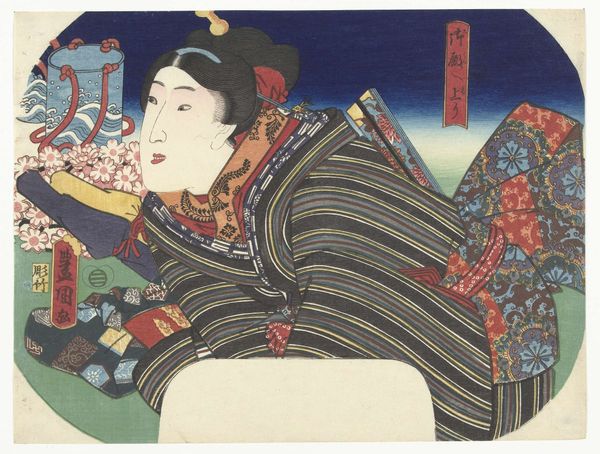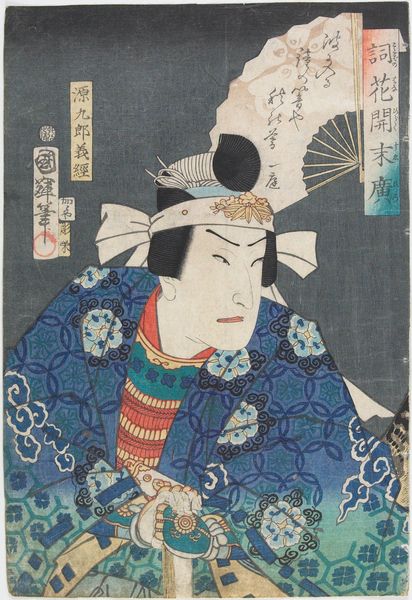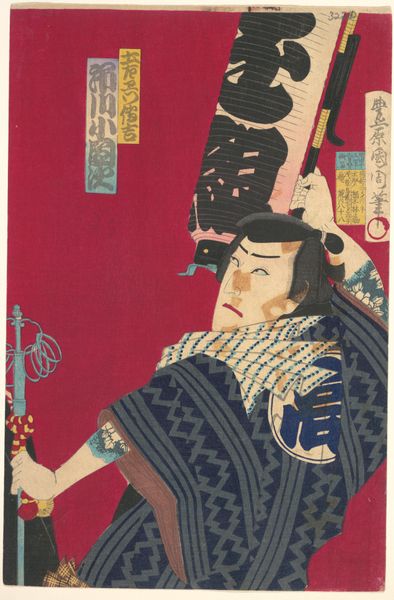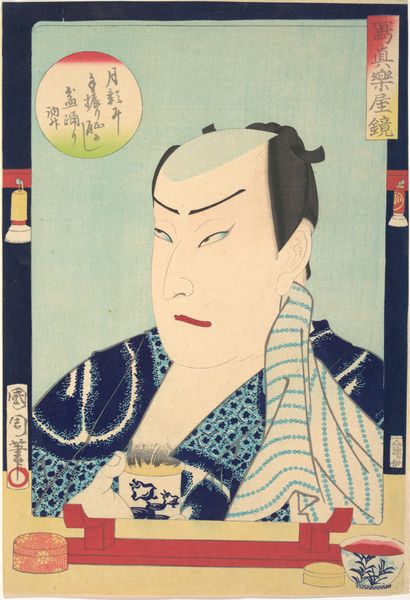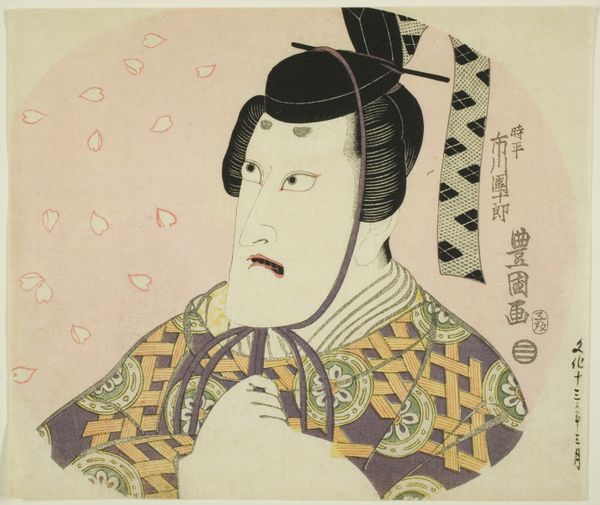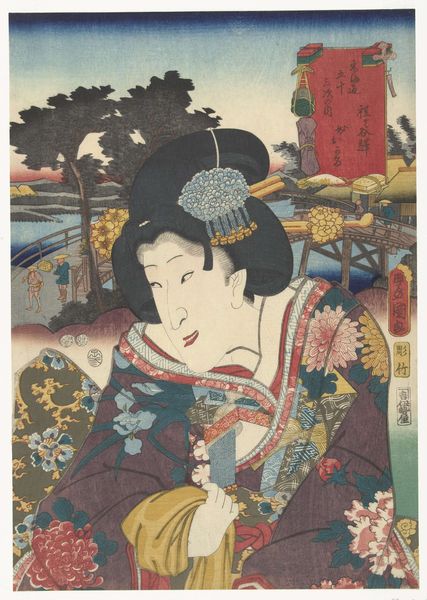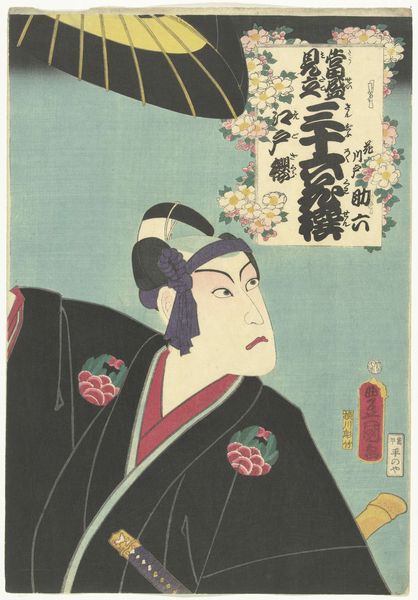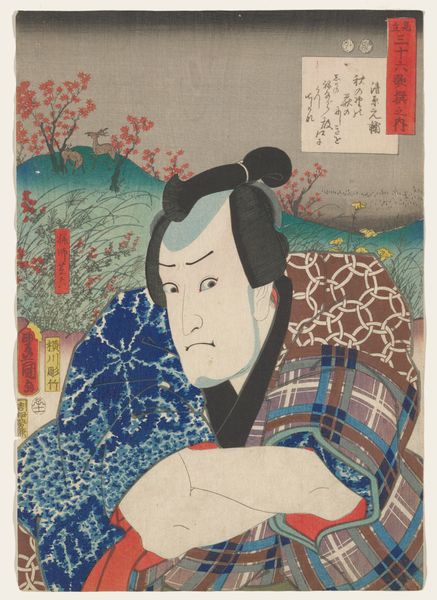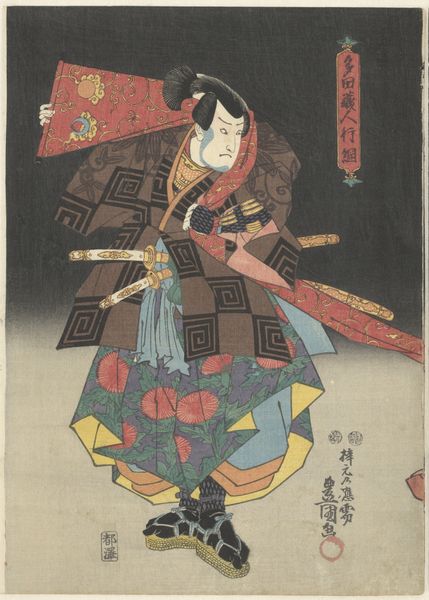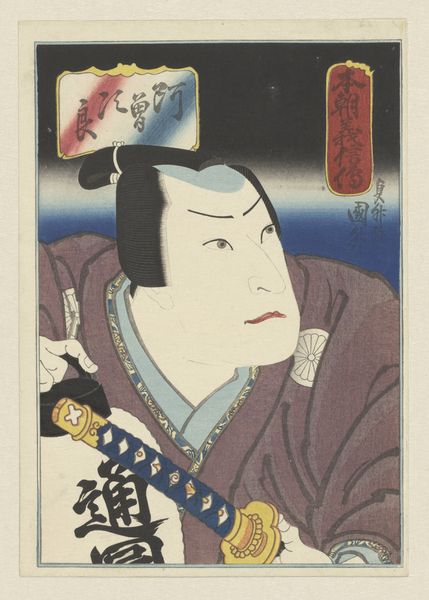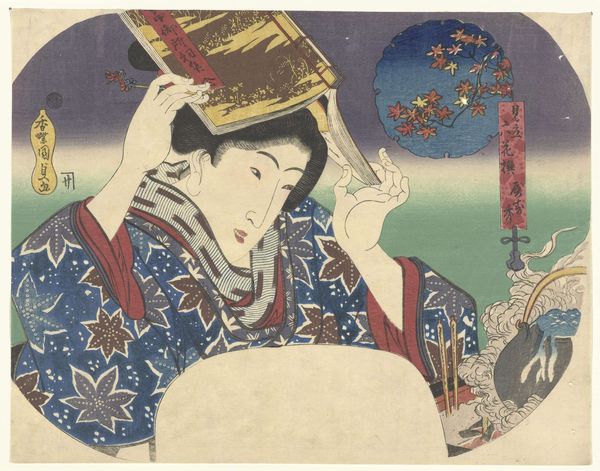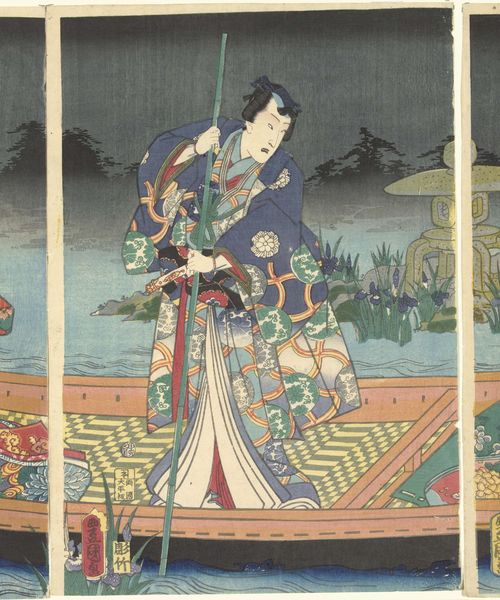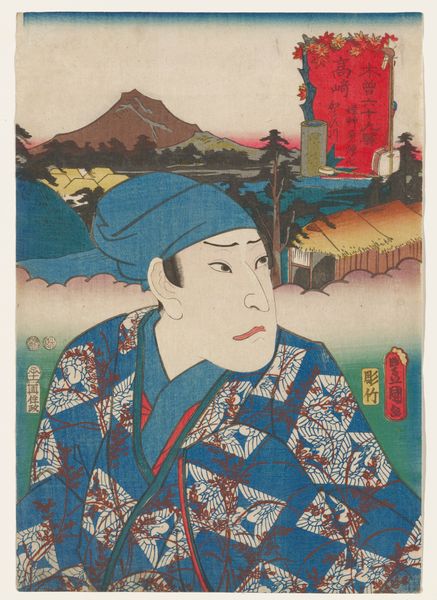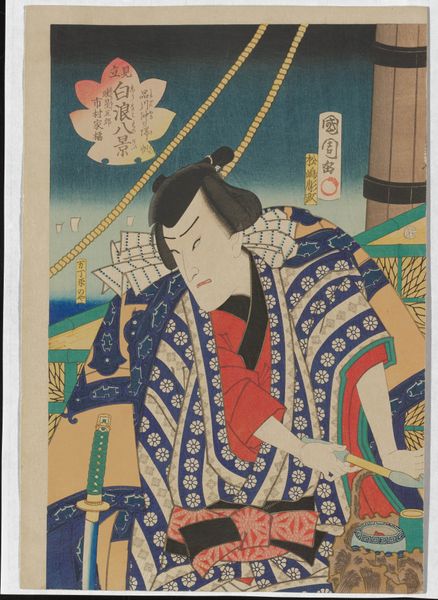
print, woodblock-print
#
portrait
# print
#
asian-art
#
landscape
#
river
#
flower
#
ukiyo-e
#
figuration
#
woodblock-print
#
naive art
#
watercolour illustration
Dimensions: height 218 mm, width 290 mm
Copyright: Rijks Museum: Open Domain
Editor: This woodblock print from around 1850, titled *Prins Genji met kersenbloesem,* is by Utagawa Kunisada. I find it immediately striking – there's a certain formality, yet the vibrant colors and surrounding nature give it a delicate quality. How would you interpret this work, especially considering the context it was created in? Curator: Well, looking at this Ukiyo-e print, we see more than just a portrait. We see a strategic engagement with popular culture. Prints like these weren't just art; they were commodities. Kunisada was masterful at capitalizing on trends. The *Genji* story itself was incredibly popular. How does placing Genji within a scene of cherry blossoms – a symbol of fleeting beauty – play into the viewers understanding of his character, perhaps? Editor: That's fascinating – so it’s about appealing to a certain audience and playing with familiar narratives? What role does the setting play in how the narrative would be perceived, since landscape also seemed popular at the time? Curator: Precisely. Ukiyo-e developed in a time when the merchant classes were increasingly affluent, with expanding leisure time. They wanted representations of their own lives and interests. Landscape wasn't just a backdrop, it spoke to this audience’s aspiration, their connections to urban centers, the places they went. The inclusion of natural motifs alongside known characters reinforces a sense of idealized beauty. The landscape creates a culturally significant *sense of place* that makes the protagonist relatable for the intended viewer. Editor: So, instead of high art for the elite, these prints were almost like…early forms of accessible media, reflecting and shaping societal values? Curator: Exactly! This print demonstrates how art functions within a socio-economic structure, mediating between artists, consumers, and cultural narratives. Its beauty is intertwined with its historical role as a product of its time. Editor: I never considered the print as a record of socio-economic dynamics as well as art. Curator: Precisely! Appreciating how these pieces circulate can really shift our perspective and enrich our understanding.
Comments
No comments
Be the first to comment and join the conversation on the ultimate creative platform.
